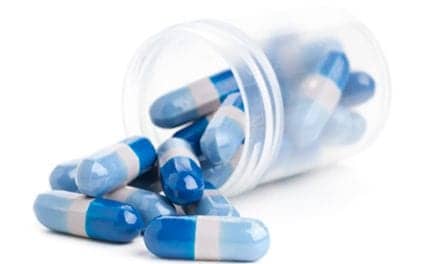Researchers report progress toward an alternative to animal-derived formulation that they say could provide a cheaper and more readily available option.
Scientists have developed a new lung surfactant that is produced synthetically rather than using animal tissues. With further development, the formulation could provide a cheaper and more readily available alternative to Infasurf (calfactant), a medication used to prevent and treat respiratory distress in premature babies.
Surfactants are substances that decrease surface tension where liquids interface with other liquids, gases, or solids. In addition to their use in medicines, they are found in a wide range of products, including detergents, cosmetics, motor oils, and adhesives.
“A synthetic surfactant could potentially have a longer shelf life, lower production costs, have less batch variability, and pose less risk of an immune response compared to animal-derived lung surfactants,” says Suzanne Farver Lukjan, PhD, a lecturer in chemistry at Troy University in Alabama who led the work, in a release. “We hope our formulation will one day be used in hospitals.”
Lukjan will present the research at Discover BMB, the annual meeting of the American Society for Biochemistry and Molecular Biology, which is being held March 23–26 in San Antonio, Texas.
Lung surfactants help premature babies breathe while their lung cells finish developing. In addition to offering a potential alternative to replace Infasurf for babies, researchers say the new synthetic surfactant could be useful for treating adults with lung injuries as a result of diseases such as chronic obstructive pulmonary disorder, miner’s lung, or emphysema.
Researchers have previously attempted to develop synthetic lung surfactants, but some have been removed from the market and others have not been able to lower surface tension as well as animal-derived formulations.
In the new work, Lukjan’s team created candidate surfactants from synthetic lipids (fats) and peptides (short chains of amino acids) and then tested their surface-tension-lowering capabilities. They aimed to mimic the composition, lipid phase behavior, and biophysical function of Infasurf as closely as possible.
After tweaking a step in the sample preparation process, the researchers found a few formulations that showed particular promise. Although tests demonstrated that the chemical behavior of the synthetic surfactants was quite different from that of Infasurf, the new surfactants were able to mimic the drug’s functionality in terms of lowering surface tension and seemed to achieve the optimal range in terms of peptide concentration.
As a next step, Lukjan says, the group plans to continue to refine and test their formulation to further optimize the combination of lipids and peptides. The surfactant would also need to undergo safety testing before it could be used clinically.
This work was partially funded by ONY Biotech Inc, maker of Infasurf.
Illustration 78103684 © Hywards | Dreamstime.com










